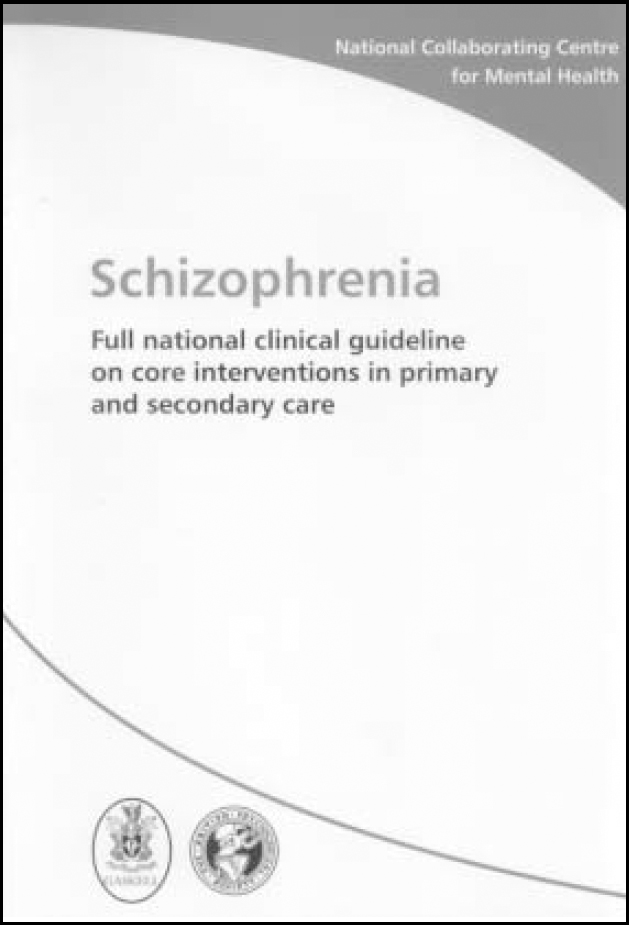
National schizophrenia guidelines with some relationship to evidence are overdue. These guidelines are underpinned by substantial critical appraisal of the literature, which is then embedded in thoughtful, concise synopses. The presentation is clear, well-structured (if not indexed) and attractive, and enhanced by one training CD and another containing relevant data. The document is easy to read, represents important progress and should be used, at the very least, by everyone interested in the care of people with schizophrenia in England and Wales. But there are caveats. Several. Bits are missing, open to misinterpretation, biased, and verging on the ridiculous.
Intentionally, the guide does not cover care of the elderly or very young. It does not contain information on the management of common adverse effects, surprisingly little on early intervention services and treatment issues of people with concurrent depression, learning disability, personality disorder, physical ill health or/and substance misuse. Management problems relating to legal or forensic issues are not tackled. But then you cannot do everything in one document. Perhaps the ambiguous ‘full’ of the title refers to the nations and not the scope of care. It is therefore redundant; one would hardly expect Yorkshire or Yeovil, for example, to be exempt. Perhaps the title’s ‘core’ is also debatable.
The guidance about the use of oral atypicals has already been misinterpreted. It recommended that expensive new drugs are considered in the choice of first-line treatments for people with newly-diagnosed schizophrenia (5.2.7.7). It did not recommend that they are the first-line choice as is implied by some rosettebedraggled advertising. Older inexpensive atypicals are not precluded, and neither are first generation drugs given in adequate but not excessive doses (5.2.7.3).
The guidance on rapid tranquillisation may betray biases. The reporting of one olanzapine study seemed excessive, covering half a page with uninterpretable figures (5.5.4). This prompted me to use the accompanying CD to seek the source study. I do not have space here to fully appraise this shameless industry vehicle, but why it is given such exposure, considering there are so many other shameless industry vehicles in competition, smacks of successful ‘interested’ lobbying.
Reading the guideline, I did not expect to laugh, but did. They say audit could take place to monitor compliance with recommendations for, among many other things, family interventions and cognitive-behavioural therapy (CBT, Table 8.1). Family interventions (>10 sessions, >6 months) are to be offered to everyone with schizophrenia – and everyone with persisting psychotic symptoms should have CBT (>10 sessions, >6 months). These recommendations stem from trial data showing modest declining effects that fail to report adverse effects and interventions given mostly by highly-skilled motivated teams. These silly unrealistic recommendations devalue both the therapies and guidelines.
These guidelines should be successful in assisting clinicians and patients make decisions about appropriate treatment (1.1.1). I am not at all convinced, however, that they will be the same decisions as those suggested in these guidelines. Nevertheless this important work encourages decisions to be made carefully and rationally. That seems like progress.



eLetters
No eLetters have been published for this article.